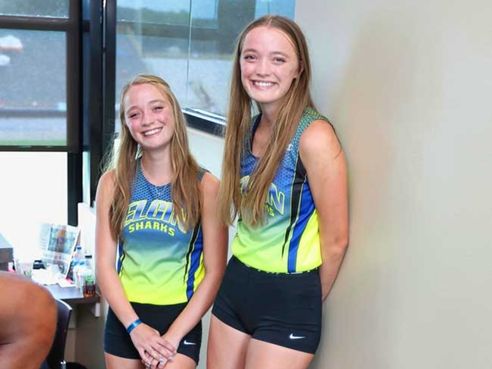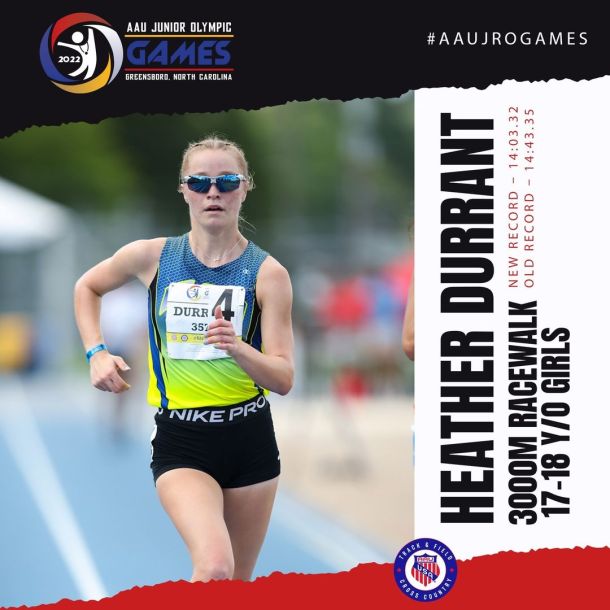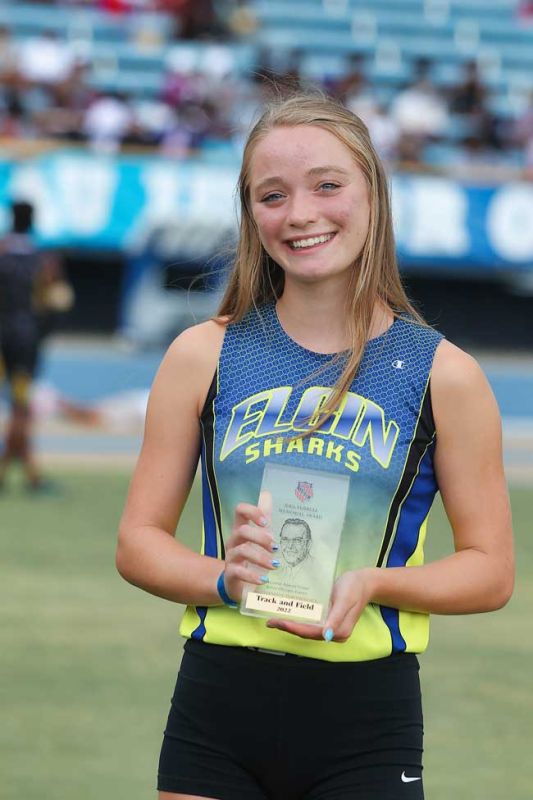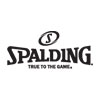Durrant Sisters are Stars in Racewalking
03/02/2023
Heather and Hannah Durrant are AAU track and field alums who dominated at the 2022 AAU Junior Olympic Games
Original article by Lauren Keating published in Youth Runner Magazine
There was once a time when racewalking wasn’t as respected as other track and field events. Racewalking was viewed as being “easy” or that these athletes didn’t have what it took to be runners. And while there still remains a trace of that stigma today—especially among boys who might be embarrassed to pursue it—there are twin sisters that are taking race walking by storm and inspiring all young athletes. Heather and Hannah Durrant are the duos that are turning heads and shining the spotlight on race walking.
“There’s a lot more to think about when you’re racewalking than running,” Heather Durrant said, adding that she doesn’t think about form when running.
Her twin Hannah is the opposite.
She agreed that while racewalking isn’t easier than running events, it comes more naturally to her than running. “When I run, my form sometimes turns into a race walk when I’m tired,” she said. “When I run, I have to think about my form more. I have to lift my knee higher because of how much I racewalk,” she said.
Racewalking made its Olympic Games debut in 1904. It’s an event that is strict on the rules and requires precise form.
Racewalkers have to keep muscles and shoulders relaxed while constantly remembering to move heel, toe, heel, toe, pushing off with the toe. Hannah added that it’s important to stay low to the ground and make sure the athlete isn’t lifting—have both feet off the ground. “And make sure when you strike you aren’t landing flat-footed,” she said.
Form also requires a straight leg. A bent knee may cause a penalty. In running events, athletes are encouraged to give it all they have to the end no matter what form looks like. For racewalkers, this could result in disqualification.
“Once you hit that one speed, it looks like you’re almost running,” Hannah said. It takes discipline and focus not to sprint to the finish, finding that balance of giving it one’s all while still respecting the rules.
“The first thing you have to learn about racewalking is technique,” the twins’ race walking mentor Butch Peters said. “A lot of mistakes kids make is they come into race walking and they think they have to go fast first away and that’s not how you learn how to race walk. You have to learn the technique first and then speed eventually comes as you get better at it.”
Hannah describes her race walking form as smooth. “I don’t worry about my pace. I first get the form down, then I speed up as the form feels right. When I’m more relaxed my muscles don’t tense."
First comes solid form for Heather. Then comes the cadence which creates a rhythm that she rides to. “It all comes together,” she said.
“Despite their genetic similarities, they have developed their own unique race walking and running styles, and despite being unique in many of their endeavors, they complement and complete each other too,” Dr. David Durrant, the twins’ father, said.
In the Durrants’ home state of Illinois race walking and running coach Scott Kurth said the focus in track and field is on speed. Race walking continues to not be a popular track and field event across the United States. But Kurth said the girls were willing to try the “go long, go slow” philosophy to become great race walkers.
Kurth, who serves as a “spiritual and technique guide” and who currently works with the girls off season, revealed the girls worked hard on stride length and cadence and mimic each other when training so that their technique is becoming “flawless."
“The first year is always the hardest,” Heather said. She added that it’s challenging to get the form down, calling it all “mental.” But she said to give it time, and it will become easier and eventually everything clicks.
RISING STAR POWER
With the help of athletes like the Durrant sisters, racewalking is increasingly gaining respect.
Heather Durrant has reached All American Status in race walking more than ten times. Increasing in confidence in her abilities and promise in the sport, this talented teen has been on fire–especially this past year.
In April 2022, Heather competed in the 10k racewalk at the USATF U20 Outdoor Track and Field Championships held at Hayward Field in Eugene, Oregon. She finished in third place making history as one of the three U20 female athletes to finish the 10k racewalk event in under 50 minutes. She finished in 49:55.88. This qualified her as an alternate on Team USA.
However, she was disappointed when she did not make one of the top two positions to compete.
With more fuel to take on her next goals, Heather participated in the 2022 USATF National Junior Olympic Track and Field Championships at Hornets Stadium in Sacramento, California just a month later. She finished in first place with a time of 13:49.08 in the 3K race walking event, shattering the previous record.
Then a few days later, Heather competed at the 2022 AAU Junior Olympic Games held at the North Carolina AT&T Stadium in Greensboro. Heather had a record-breaking performance in the 17-18-year-old women’s 3000m racewalk event, setting a new AAU national meet record of 14:03.32.

“To see how Heather blew the national record away was incredible,” AAU Track & Field National Executive Committee Vice-Chair/Administration Marchan Adkins said. “She didn’t just break the race walking record,” he added. “She destroyed it.”
Her twin Hannah was also victorious, coming in second place with a time of 15:55.84.
“I’ve been following all of the Durrants since they were kids,” Adkins said. “And to see Heather and Hannah come into their own and watch them finish one and two was amazing.”
Heather also competed in the 1500m run at the AAU Junior Olympic Games, where she won with a finish time of 4:50.4. It is rare for an athlete to excel at both racewalking and running events.
Adkins recalled watching the event from the press box with commentary from the announcer saying that they have never seen anyone break a race walk national record and then go on to win a running event.
“A lot of people underestimate racewalkers,” Adkins said. “It takes a whole lot of strength, skill, and disciple to be a racewalker and that enhances Heather and Hannah’s ability to run because they are incredible runners as well–and have been for a decade or so now.”
Because of her performance at the AAU Junior Olympic Games, Heather was awarded with the prestigious Joel Ferrell Memorial Award, presented to her at the AAU 2022 Junior Olympic Games. The award was established to recognize performance and sportsmanship and is given to one male or female athlete in each sport at the Games. Heather’s name is engraved on a special plaque at the AAU National Headquarters.

“I think the AAU Junior Olympic Games serve as the starting point for great athletes to excel to higher levels,” Adkins said. “The top athletes that you see in the Olympics were once them,” he said, adding that the future of the Durrant twins looks bright.
“I see Heather as an Olympic athlete,” Kurth, a coach since 1980, said “She’s a finely tuned athlete and her greatness is going to show as we plan in the next four to eight years to be in the Olympics. There are not many athletes that can say that.” And he would know as he’s coached Olympians and pro triathletes before.
When coach Kurth took the girls on as a coach for training during their high school off-season, he told them that their future is in racewalking. He added that they have a skill set that in the U.S. you just don’t see.
He also sees a long future in race walking for Hannah. The twin is also no stranger to notoriety in the racewalking world either. She is a six-time All-American race walker who competed in more than 10 Junior Olympic Games. She holds a 56:34.69 PR in the 10000 m race walk, set at the USATF U20 Outdoor Championships in Eugene, Oregon in June 2022.
It can be hard to be a twin when your sister is one of the top competitors in the country. “To be in that position and the improvements she has made in a short year is amazing,” Kurth said. “The strides Hannah has made are immense.”
This includes cutting minutes off her finish times and strategies like learning how to increase and change tempo and how to read someone else’s tempo.
“There is no sibling rivalry. They complement, push each other and love each other’s success. I think that’s what’s incredible,” Adkins said. “They continue to push each other. There wouldn’t be this level of talent in Heather if it wasn’t for Hannah.”
These 17-year-old twins are the poster children for rising above all odds, facing hardships and obstacles yet finding their footing in the youth-running world. Heather and Hannah have overcome health issues, and injuries and have had their disappointments in competitive racing. As their star power continues to rise, so does the talk about the bright futures of the race walking and running twins.
The twins are known for their resilience since before birth. Early in the second trimester of her pregnancy, their mother Christine Durrant found out that girls were diagnosed with twin-to-twin transfusion syndrome (TTTS), a rare condition that occurs with identical twins. With TTTS, the babies share a placenta with abnormal blood vessel connections. This creates an imbalance in the blood exchange.
As a result, one twin becomes the “donor,” which gives away more blood than received. This can cause dehydration, organ failure, and the risk of not getting enough nutrients. The other twin, the “recipient,” then receives too much blood, which can cause high blood pressure that puts strain on the heart. Babies with TTTS are both at serious risk. One to two diagnostic ultrasounds were needed each week to monitor the twin’s status and to guide care during the pregnancy.
During the course of the pregnancy, the Durrant parents had a tough decision to make regarding an elective operation. This laparoscopic procedure could only be performed during a few specific weeks during the pregnancy. The procedure is used to separate the blood supply. This then may improve the odds of survival of one twin but increases the risk of mortality for the other. “I was going to save my babies,” their mother said. The girls were named after their first ultrasound and Christine Durrant was determined to deliver two healthy babies.
While the procedure could have increased the twins' chances of survival, there was no guarantee. Plus, the added risk of losing one or both of the twins. Neurologist and father of the twins David Durrant reached out for advice from the leading expert on TTTS, the late Dr. Julian E. De Lia who guided the parents through the pregnancy.
“The only reason why my children are alive today is because of my husband,” Christine Durrant said.
As Christians, the Durrants held close to their faith and eventually had to “let go and let God.”
“Another challenge associated with the TTTS pregnancy was the risk of premature delivery or emergency cesarean-section. The more premature, the greater the risk of neurological complications. Every day the girls were viable was a gift,” Dr. Durrant said about the journey as he juggled both his father and his physician hats. “Time allowed their systems to develop and become stronger.”
Since nonsurgical options had been successful, the twin's parents decided against the operation and opted to “nudge nature” with periodic amnioreductions, which involves draining excess amniotic fluid. The procedures were successful. “It was quite a miracle,” Christine Durrant said.
Heather and Hannah Durrant were delivered early by C-section. They spent a short time in the neonatal intensive care unit as a precaution. They were healthy, despite high risks of developing serious complications. Today saying the Durrant girls have excelled at what they put their minds to is an understatement.
“Taking on track and field as young as they did helped the development of their nervous systems, Dr. Durrant, who serves as the Director of the Chicago Neuroscience Institute, and has a PhD in Health Services with an emphasis on advanced brain and spinal cord imaging, said.
He acknowledged that researchers are finding that early athletic activity plays a favorable role in neurological development, with benefits crossing over to music and academics.
This includes an article published in the International Journal of Environmental Research and Public Health in 2018 that highlights that positive impact sports has cognitive function and development.
There is also a link between music and neurologic development—the very reason why their parents encouraged the twins to pick up instruments. Heather, a second chair violist, and her sister a third chair cellist.
“The young brain as it matures is constantly remodeling and adapting and organizing as the result of the practice of any skill,” Dr. Durrant said. “I think that athletics may have played a significant role in their case.”
However, their road to greatness hasn't always been easy. The Durrant twins dealt with auditory processing delays, which caused them to struggle in elementary school.
But Dr. Durrant believed that many of his daughters’ developmental delays could be overcome with the right stimuli and training at the right times. "This is where getting involved with athletics is important,” he said. “There is a common phrase in neurology which states ‘nerves that fire together, wire together.’” This refers to neuroplasticity, a process whereby the nervous system structurally and functionally adapts to repetitive activity. During athletic training, mental focus combined with repetitive movements that build muscle strength and spatial memory “help facilitate favorable connections throughout the nervous system.”
The Larkin High School Seniors emphasized that they put education first. Heather and Hannah have a weighted GPA of 4.523 and 4.558, respectively. They both were awarded Academic All-Conference recipients every semester of high school and have made the National Honor Society, Math, Honor Society, and participate on the LHS Math Team. Hannah has earned straight A’s since 7th grade and was named the 2023-24 State Scholar by the Illinois Student Assistance Commission and the State of Illinois, for being one of the “best and brightest” of Illinois high school seniors.
The Durrant sisters are well-rounded. Their volunteer work includes assisting athletes with special needs, tutoring in math, and participating with religious youth groups.
“I’m very proud of the girls. Mainly, whether they accomplish victories or not it's just their character and how they attack everything--they give it their all,” coach Peters, former coach for the girls’ track and field club, said.
Click here to continue reading the full article
There was once a time when racewalking wasn’t as respected as other track and field events. Racewalking was viewed as being “easy” or that these athletes didn’t have what it took to be runners. And while there still remains a trace of that stigma today—especially among boys who might be embarrassed to pursue it—there are twin sisters that are taking race walking by storm and inspiring all young athletes. Heather and Hannah Durrant are the duos that are turning heads and shining the spotlight on race walking.
“There’s a lot more to think about when you’re racewalking than running,” Heather Durrant said, adding that she doesn’t think about form when running.
Her twin Hannah is the opposite.
She agreed that while racewalking isn’t easier than running events, it comes more naturally to her than running. “When I run, my form sometimes turns into a race walk when I’m tired,” she said. “When I run, I have to think about my form more. I have to lift my knee higher because of how much I racewalk,” she said.
Racewalking made its Olympic Games debut in 1904. It’s an event that is strict on the rules and requires precise form.
Racewalkers have to keep muscles and shoulders relaxed while constantly remembering to move heel, toe, heel, toe, pushing off with the toe. Hannah added that it’s important to stay low to the ground and make sure the athlete isn’t lifting—have both feet off the ground. “And make sure when you strike you aren’t landing flat-footed,” she said.
Form also requires a straight leg. A bent knee may cause a penalty. In running events, athletes are encouraged to give it all they have to the end no matter what form looks like. For racewalkers, this could result in disqualification.
“Once you hit that one speed, it looks like you’re almost running,” Hannah said. It takes discipline and focus not to sprint to the finish, finding that balance of giving it one’s all while still respecting the rules.
“The first thing you have to learn about racewalking is technique,” the twins’ race walking mentor Butch Peters said. “A lot of mistakes kids make is they come into race walking and they think they have to go fast first away and that’s not how you learn how to race walk. You have to learn the technique first and then speed eventually comes as you get better at it.”
Hannah describes her race walking form as smooth. “I don’t worry about my pace. I first get the form down, then I speed up as the form feels right. When I’m more relaxed my muscles don’t tense."
First comes solid form for Heather. Then comes the cadence which creates a rhythm that she rides to. “It all comes together,” she said.
“Despite their genetic similarities, they have developed their own unique race walking and running styles, and despite being unique in many of their endeavors, they complement and complete each other too,” Dr. David Durrant, the twins’ father, said.
In the Durrants’ home state of Illinois race walking and running coach Scott Kurth said the focus in track and field is on speed. Race walking continues to not be a popular track and field event across the United States. But Kurth said the girls were willing to try the “go long, go slow” philosophy to become great race walkers.
Kurth, who serves as a “spiritual and technique guide” and who currently works with the girls off season, revealed the girls worked hard on stride length and cadence and mimic each other when training so that their technique is becoming “flawless."
“The first year is always the hardest,” Heather said. She added that it’s challenging to get the form down, calling it all “mental.” But she said to give it time, and it will become easier and eventually everything clicks.
RISING STAR POWER
With the help of athletes like the Durrant sisters, racewalking is increasingly gaining respect.
Heather Durrant has reached All American Status in race walking more than ten times. Increasing in confidence in her abilities and promise in the sport, this talented teen has been on fire–especially this past year.
In April 2022, Heather competed in the 10k racewalk at the USATF U20 Outdoor Track and Field Championships held at Hayward Field in Eugene, Oregon. She finished in third place making history as one of the three U20 female athletes to finish the 10k racewalk event in under 50 minutes. She finished in 49:55.88. This qualified her as an alternate on Team USA.
However, she was disappointed when she did not make one of the top two positions to compete.
With more fuel to take on her next goals, Heather participated in the 2022 USATF National Junior Olympic Track and Field Championships at Hornets Stadium in Sacramento, California just a month later. She finished in first place with a time of 13:49.08 in the 3K race walking event, shattering the previous record.
Then a few days later, Heather competed at the 2022 AAU Junior Olympic Games held at the North Carolina AT&T Stadium in Greensboro. Heather had a record-breaking performance in the 17-18-year-old women’s 3000m racewalk event, setting a new AAU national meet record of 14:03.32.

“To see how Heather blew the national record away was incredible,” AAU Track & Field National Executive Committee Vice-Chair/Administration Marchan Adkins said. “She didn’t just break the race walking record,” he added. “She destroyed it.”
Her twin Hannah was also victorious, coming in second place with a time of 15:55.84.
“I’ve been following all of the Durrants since they were kids,” Adkins said. “And to see Heather and Hannah come into their own and watch them finish one and two was amazing.”
Heather also competed in the 1500m run at the AAU Junior Olympic Games, where she won with a finish time of 4:50.4. It is rare for an athlete to excel at both racewalking and running events.
Adkins recalled watching the event from the press box with commentary from the announcer saying that they have never seen anyone break a race walk national record and then go on to win a running event.
“A lot of people underestimate racewalkers,” Adkins said. “It takes a whole lot of strength, skill, and disciple to be a racewalker and that enhances Heather and Hannah’s ability to run because they are incredible runners as well–and have been for a decade or so now.”
Because of her performance at the AAU Junior Olympic Games, Heather was awarded with the prestigious Joel Ferrell Memorial Award, presented to her at the AAU 2022 Junior Olympic Games. The award was established to recognize performance and sportsmanship and is given to one male or female athlete in each sport at the Games. Heather’s name is engraved on a special plaque at the AAU National Headquarters.

“I think the AAU Junior Olympic Games serve as the starting point for great athletes to excel to higher levels,” Adkins said. “The top athletes that you see in the Olympics were once them,” he said, adding that the future of the Durrant twins looks bright.
“I see Heather as an Olympic athlete,” Kurth, a coach since 1980, said “She’s a finely tuned athlete and her greatness is going to show as we plan in the next four to eight years to be in the Olympics. There are not many athletes that can say that.” And he would know as he’s coached Olympians and pro triathletes before.
When coach Kurth took the girls on as a coach for training during their high school off-season, he told them that their future is in racewalking. He added that they have a skill set that in the U.S. you just don’t see.
He also sees a long future in race walking for Hannah. The twin is also no stranger to notoriety in the racewalking world either. She is a six-time All-American race walker who competed in more than 10 Junior Olympic Games. She holds a 56:34.69 PR in the 10000 m race walk, set at the USATF U20 Outdoor Championships in Eugene, Oregon in June 2022.
It can be hard to be a twin when your sister is one of the top competitors in the country. “To be in that position and the improvements she has made in a short year is amazing,” Kurth said. “The strides Hannah has made are immense.”
This includes cutting minutes off her finish times and strategies like learning how to increase and change tempo and how to read someone else’s tempo.
“There is no sibling rivalry. They complement, push each other and love each other’s success. I think that’s what’s incredible,” Adkins said. “They continue to push each other. There wouldn’t be this level of talent in Heather if it wasn’t for Hannah.”
These 17-year-old twins are the poster children for rising above all odds, facing hardships and obstacles yet finding their footing in the youth-running world. Heather and Hannah have overcome health issues, and injuries and have had their disappointments in competitive racing. As their star power continues to rise, so does the talk about the bright futures of the race walking and running twins.
A DELICATE, YET STRONG BEGINNING
The twins are known for their resilience since before birth. Early in the second trimester of her pregnancy, their mother Christine Durrant found out that girls were diagnosed with twin-to-twin transfusion syndrome (TTTS), a rare condition that occurs with identical twins. With TTTS, the babies share a placenta with abnormal blood vessel connections. This creates an imbalance in the blood exchange.
As a result, one twin becomes the “donor,” which gives away more blood than received. This can cause dehydration, organ failure, and the risk of not getting enough nutrients. The other twin, the “recipient,” then receives too much blood, which can cause high blood pressure that puts strain on the heart. Babies with TTTS are both at serious risk. One to two diagnostic ultrasounds were needed each week to monitor the twin’s status and to guide care during the pregnancy.
During the course of the pregnancy, the Durrant parents had a tough decision to make regarding an elective operation. This laparoscopic procedure could only be performed during a few specific weeks during the pregnancy. The procedure is used to separate the blood supply. This then may improve the odds of survival of one twin but increases the risk of mortality for the other. “I was going to save my babies,” their mother said. The girls were named after their first ultrasound and Christine Durrant was determined to deliver two healthy babies.
While the procedure could have increased the twins' chances of survival, there was no guarantee. Plus, the added risk of losing one or both of the twins. Neurologist and father of the twins David Durrant reached out for advice from the leading expert on TTTS, the late Dr. Julian E. De Lia who guided the parents through the pregnancy.
“The only reason why my children are alive today is because of my husband,” Christine Durrant said.
As Christians, the Durrants held close to their faith and eventually had to “let go and let God.”
“Another challenge associated with the TTTS pregnancy was the risk of premature delivery or emergency cesarean-section. The more premature, the greater the risk of neurological complications. Every day the girls were viable was a gift,” Dr. Durrant said about the journey as he juggled both his father and his physician hats. “Time allowed their systems to develop and become stronger.”
Since nonsurgical options had been successful, the twin's parents decided against the operation and opted to “nudge nature” with periodic amnioreductions, which involves draining excess amniotic fluid. The procedures were successful. “It was quite a miracle,” Christine Durrant said.
Heather and Hannah Durrant were delivered early by C-section. They spent a short time in the neonatal intensive care unit as a precaution. They were healthy, despite high risks of developing serious complications. Today saying the Durrant girls have excelled at what they put their minds to is an understatement.
“Taking on track and field as young as they did helped the development of their nervous systems, Dr. Durrant, who serves as the Director of the Chicago Neuroscience Institute, and has a PhD in Health Services with an emphasis on advanced brain and spinal cord imaging, said.
He acknowledged that researchers are finding that early athletic activity plays a favorable role in neurological development, with benefits crossing over to music and academics.
This includes an article published in the International Journal of Environmental Research and Public Health in 2018 that highlights that positive impact sports has cognitive function and development.
There is also a link between music and neurologic development—the very reason why their parents encouraged the twins to pick up instruments. Heather, a second chair violist, and her sister a third chair cellist.
“The young brain as it matures is constantly remodeling and adapting and organizing as the result of the practice of any skill,” Dr. Durrant said. “I think that athletics may have played a significant role in their case.”
However, their road to greatness hasn't always been easy. The Durrant twins dealt with auditory processing delays, which caused them to struggle in elementary school.
But Dr. Durrant believed that many of his daughters’ developmental delays could be overcome with the right stimuli and training at the right times. "This is where getting involved with athletics is important,” he said. “There is a common phrase in neurology which states ‘nerves that fire together, wire together.’” This refers to neuroplasticity, a process whereby the nervous system structurally and functionally adapts to repetitive activity. During athletic training, mental focus combined with repetitive movements that build muscle strength and spatial memory “help facilitate favorable connections throughout the nervous system.”
The Larkin High School Seniors emphasized that they put education first. Heather and Hannah have a weighted GPA of 4.523 and 4.558, respectively. They both were awarded Academic All-Conference recipients every semester of high school and have made the National Honor Society, Math, Honor Society, and participate on the LHS Math Team. Hannah has earned straight A’s since 7th grade and was named the 2023-24 State Scholar by the Illinois Student Assistance Commission and the State of Illinois, for being one of the “best and brightest” of Illinois high school seniors.
The Durrant sisters are well-rounded. Their volunteer work includes assisting athletes with special needs, tutoring in math, and participating with religious youth groups.
“I’m very proud of the girls. Mainly, whether they accomplish victories or not it's just their character and how they attack everything--they give it their all,” coach Peters, former coach for the girls’ track and field club, said.
Click here to continue reading the full article
 Email
Email Print
Print









